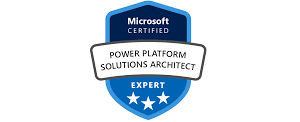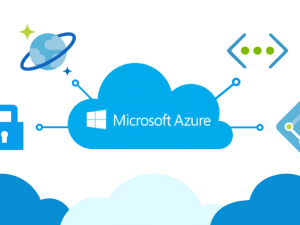Audience
Everyone in the organization can create in a fraction of the time with AppSheet’s no code. Business users can quickly and contribute to apps and to solve neglected problems while IT focuses on mission-critical projects. Reduce project backlogs and costs while increasing productivity.
Prerequisites
Before attending this course, students must have:
• A good understanding of JavaScript.
• Basic understanding of HTML and CSS.
• At least a notion of node.js and npm. An IDE for web development like Visual Studio Code or WebStorm.
Skills Gained
After completing this course, students will be able to:
• Plan: Identify the who, what, when, and why.
• Design: Model the data (decide how the data you need and create will be organized, accessed, and stored) and sketch out the app screens.
• Make: Create the app.
• Test: Have users try the app.
• Deploy and refine: Get your app into the hands of users, get feedback, and decide what to change or add.
Course outline
Module 1: Introduction to AppSheet
This module introduces AppSheet as a “nocode” app development platform which allows users to create mobile, tablet, and web applications using data sources like Google Drive, DropBox, Office 365, and other cloud-based spreadsheet and database platforms
• The No-Code Solution Concepts
• Connecting to Data Sources
o Spreadsheets
o Cloud
o Databases
• Using the AppSheet Editor
o Basic Editor
o Advanced Editor
• Adding tables in the Editor
• Adding, Update and Delete data to tables
Module 2: Modeling Tables and Columns
Behind the scenes AppSheet create apps from data intuitively. To get the most out of AppSheet, it is advisable to organize your data in a business-friendly manner. This module walks through the process of organizing and managing the business design of your data so you can develop more compelling apps.
• Data Concepts
o Database Designs
o Table Designs
• Column Types
• Records
• Entities
• Relationships
• Attributes
• Expressions and Expression Types
Module 3: App Design
This module introduces Appsheet methodologies used to reduce the cost and time to build apps through a combination of simple steps.
• The AppSheet Model
o Anatomy of an AppSheet App
• Define your entities
• Working with Patterns
o Item/Detail
o Lookup/Dropdown
Module 4: Define the UX of your app
The UX definition describes what is shown to the app user as well as how it is shown (the user interface). This module identifies the use of AppSheet Views to visualizing your data in a variety of ways and how you can select a view type by clicking on a particular table in the UX window.
• App Views and View Types
o Form View
o Detail View
o Calendar View
o Map Views
o Deck Views
o Gallery Views
o Chart Views
• Customizing Input Forms
• Managing Multi-Page Forms
• Capturing Images
• Displaying images and documents
• Branding
• Working with PDF Files
Module 5: App Behaviors
Appsheet app displays data, allows the user to navigate, capture and add to the data, and sync the data with the backend spreadsheet. While there are default behaviors for all aspects of this process, the app creator needs to know how to modify and refine these behaviors.
• Static vs dynamic behavior
• Creating Custom Actions, Buttons & Links
• Workflows
• Syncing App Data
Module 6: App Security
The app creator must decide how to design an app to be secure and accessible only to specific users or open to all users. The AppSheet backend does not maintain its own user authentication i.e. it does not maintain a database of usernames and passwords. Instead, all user authentication utilizes external user authentication services like Google, Office365, Dropbox, Box, or Smartsheet, using the OAuth protocol.
• Authentication and Authorization in AppSheet
• Domain Integration
• Security Filters
• Encrypting Data
Module 7: Deploying and Managing Apps
Deploying represents a major milestone in app development. However, the app developer needs to learn about the different aspects of app deployment.
• User Invitations
• Install AppSheets apps on Devices
o White-labelling your app for Android and IOS
• Notifications & Announcements
• Un-deploying Apps
• Managing Apps
o Customizing the editing process
o Authoring and co-authoring apps
o Transferring apps between users
o Moving apps between providers
• Monitoring Apps
o Usage Statistics
o Audit History
o Performance Profile
Module 8: Incorporating Machine Learning in AppSheets
Machine learning and AI-forward functionality further simplifies app creation and enriches the end-user experience. Now that you have seen how easy it is to iterate without any coding, this section will assist in visualizing ways that you can integrate machine learning into your processes and workflows to make better decisions and figure out the best way forward.
• OCR
• Predictive Models
o Trend Predictions
o Sentiment Analysis
o Data Extraction
o Content Classification
Schedule
Click on the following link to see the current Course Schedule
Our minimum class-size is 3 for this course.
If there are no scheduled dates for this course, it can be customized to suit the time and skill needs of clients and it can be held online, at a rented location or at your premises.
Click on the following link below to arrange for a custom course: Enquire about a course date
FAQs
CERTFICATE OF COMPLETION: Participants will receive a certificate of completion at the end of a course. This is not an official certification for the product and/or software. Our courses do indicate the appropriate certification exam(s) that the participant can sit. Data Vision Systems does not provide certification or deliver the certification exams. Participants are responsible for arranging and paying for the certification exams on the appropriate certification body.
CANCELLATION POLICY: There is never a fee for cancelling seven business days before a class for any reason. Data Vision Systems reserves the right to cancel any course due to insufficient registration or other extenuating circumstances. Participants will be advised prior to doing so.







Reviews
There are no reviews yet.